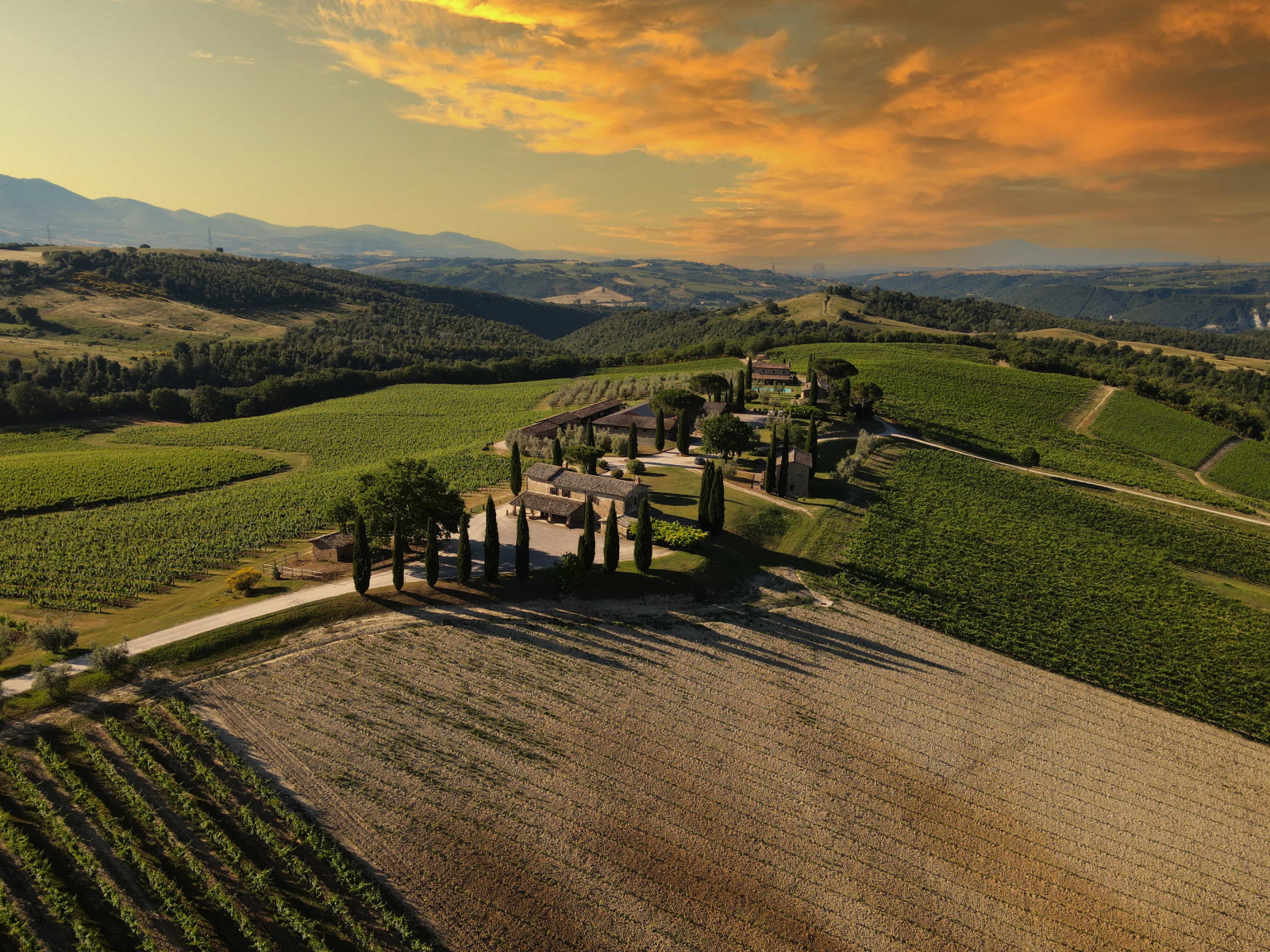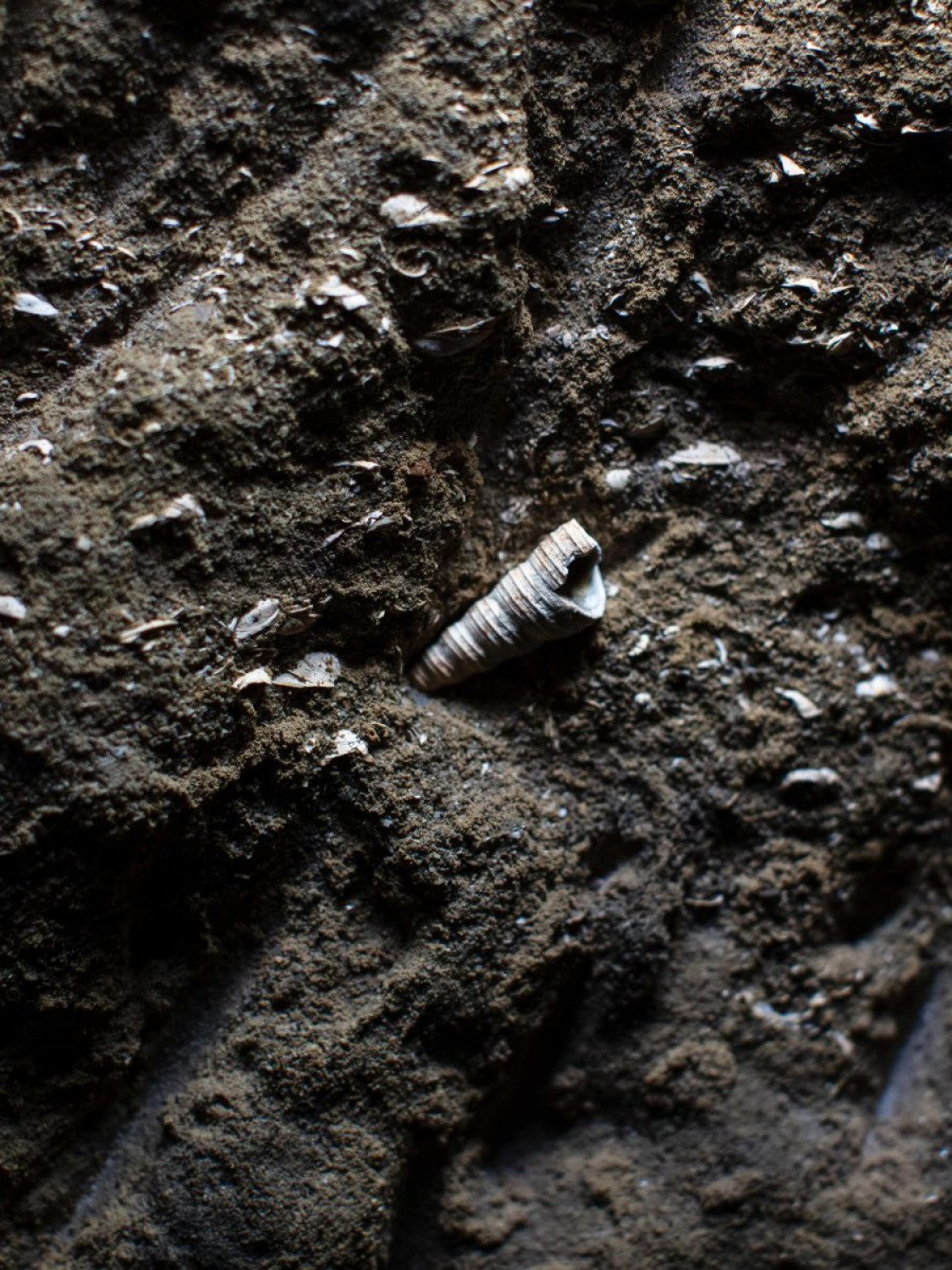
Where Umbria has
the scent of the sea.
In a place of unique characteristics, the vineyards of Decugnano dei Barbi take shape among oceanic seabeds from 3 million years ago.

The power of time and nature merge with the wisdom of man, creating an unparalleled mineral and marine terroir, giving life to an extraordinary wine.

The impetus of geological eras and the hand of man have forged Decugnano dei Barbi into a place of unique characteristics.
Here, among the oceanic seabeds of the Pliocene era, with their fossils of shells and oysters, a terroir with an unparalleled mineral and marine character takes shape.
Under a sky that dominates our vineyards from above, the altitude of over 300 meters and the optimal exposure to the sun give the grapes perfect ripeness.
Decugnano is a place where the power of time and nature merge with the wisdom of man.
Altitude
320m (1,050 ft)
Climate
Mediterranean
Soil
Sand and clay,
rich of marine sediments.
Exposure
South-east and South-west
Between the green of the woods and the sea breeze of millions of years ago, the secrets of a unique and extraordinary wine are hidden.
At Decugnano, you can smell the scent of the sea.
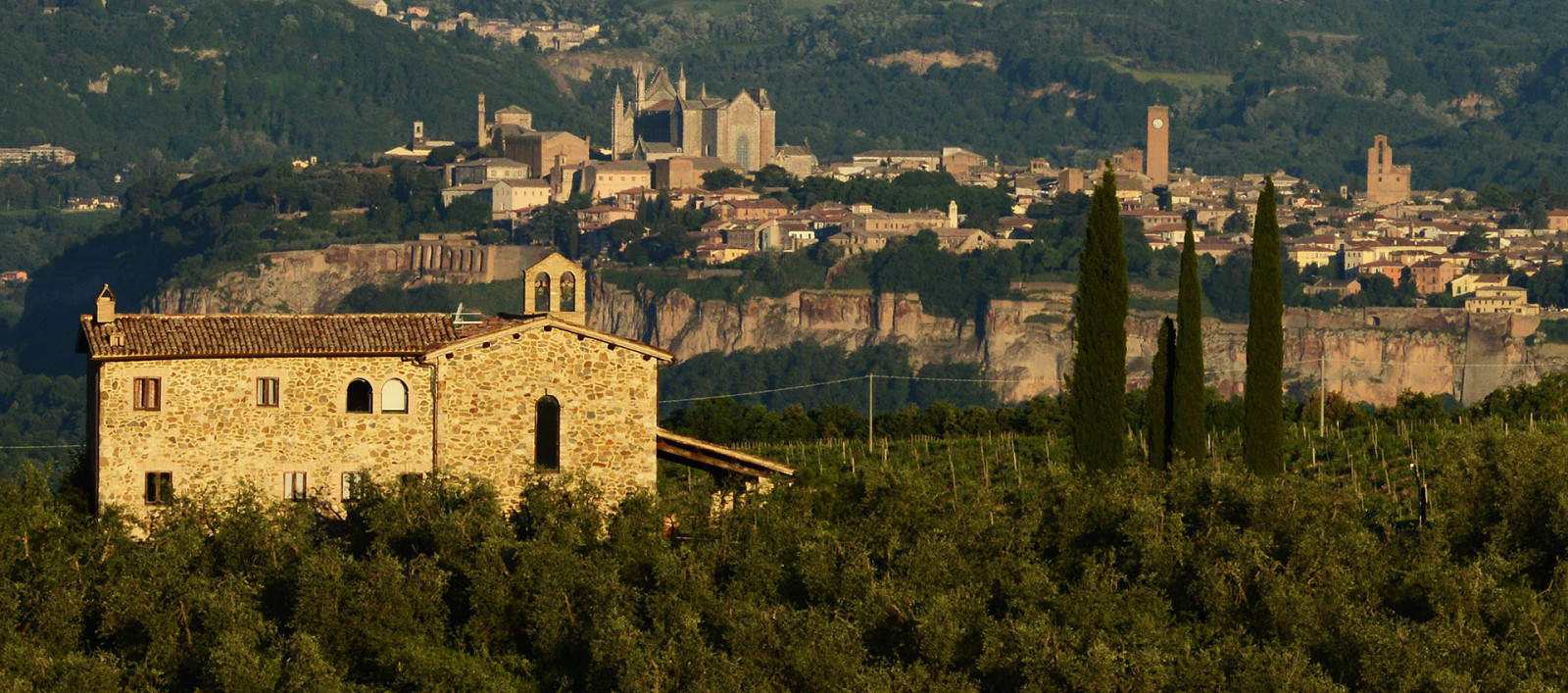
Orvieto

Orvieto wine is one of the oldest in Italy.
The Etruscans and Romans have been cultivating vines in this region for millennia, but it was during the Middle Ages that Orvieto gained fame thanks to the Popes who resided there. The Papal court was known for its refinement, and Orvieto wine was essential for their banquets.
The terroir of Orvieto is composed of a complex geological system consisting of four different zones.
The city is built on a volcanic cliff, while the countryside exhibits different characteristics: a volcanic zone to the south, a clayey zone to the northwest, an alluvial zone in the valley of the Paglia River, and a sandy zone of marine origin to the northeast.
Decugnano is situated in this latter zone, which is the oldest in the area, dating back to the time of an ancient sea and subsequently covered by successive volcanic eruptions in other parts.
Discovering the best grape varieties
for our terroir.
In 1973, the Orvieto area was dominated by procanico, a clone of Trebbiano. However, Claudio desired to surpass its limitations. Only by planting different grape varieties, vinifying them, and evaluating the quality of the resulting wine, could the true harmony between a grape variety and the terroir it inhabits be discovered.
Thus, Claudio began planting grechetto (underutilized at the time) and Chardonnay. After a few years, he experimented with Sauvignon Blanc, Vermentino, and Semillon. Even for red grapes, Claudio's curiosity led him to try new varieties for the region: Cabernet Sauvignon, alongside Sangiovese, and later Merlot, Pinot Noir, Montepulciano, and Syrah.
After 50 years of experimentation, we now have a rather good understanding of the Decugnano terroir and the varieties that best express themselves in this magnificent territory. We know that this knowledge will lead us to great results in the coming years.
White Grapes
Grechetto, Procanico, Vermentino, Chardonnay, Sauvignon Blanc, Semillon
Red Grapes
Sangiovese, Montepulciano, Syrah, Cabernet Sauvignon, Cabernet Franc, Merlot, Pinot Nero
Age of the Vines
Planted between 1984 and 2023
Size of the Vineyards
32 hectars (79 acres).
The vineyards share the same type of soil and climatic conditions.
Trellis System
Guyot and cordon spur pruning.
Yields
White grapes: 7-9 t/ha.
Red Grapes 5-7 t/ha.
Vines per hectar
Approx. 4,500
Irrigation
No: dry farming.

Visit Us
Book a personalized wine tour.
Learn More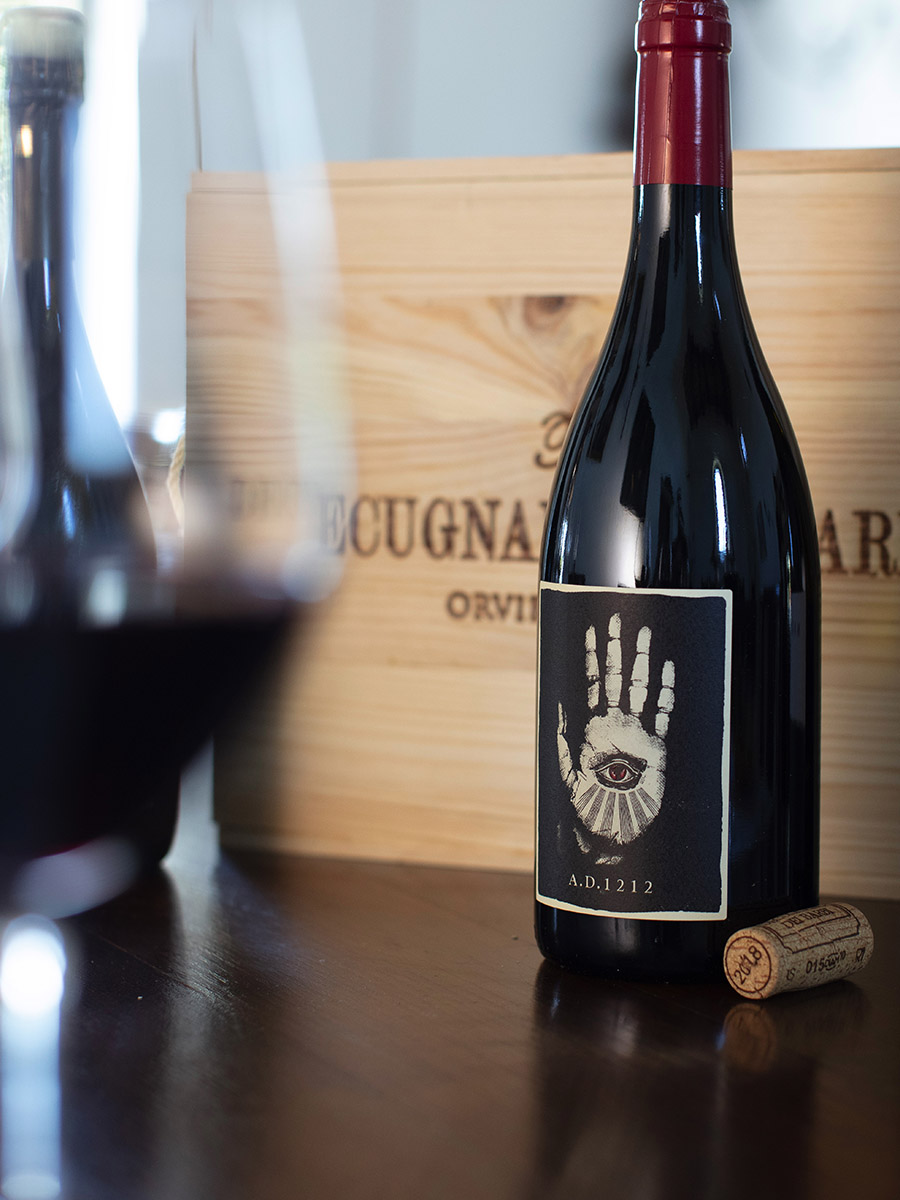
Our Wines
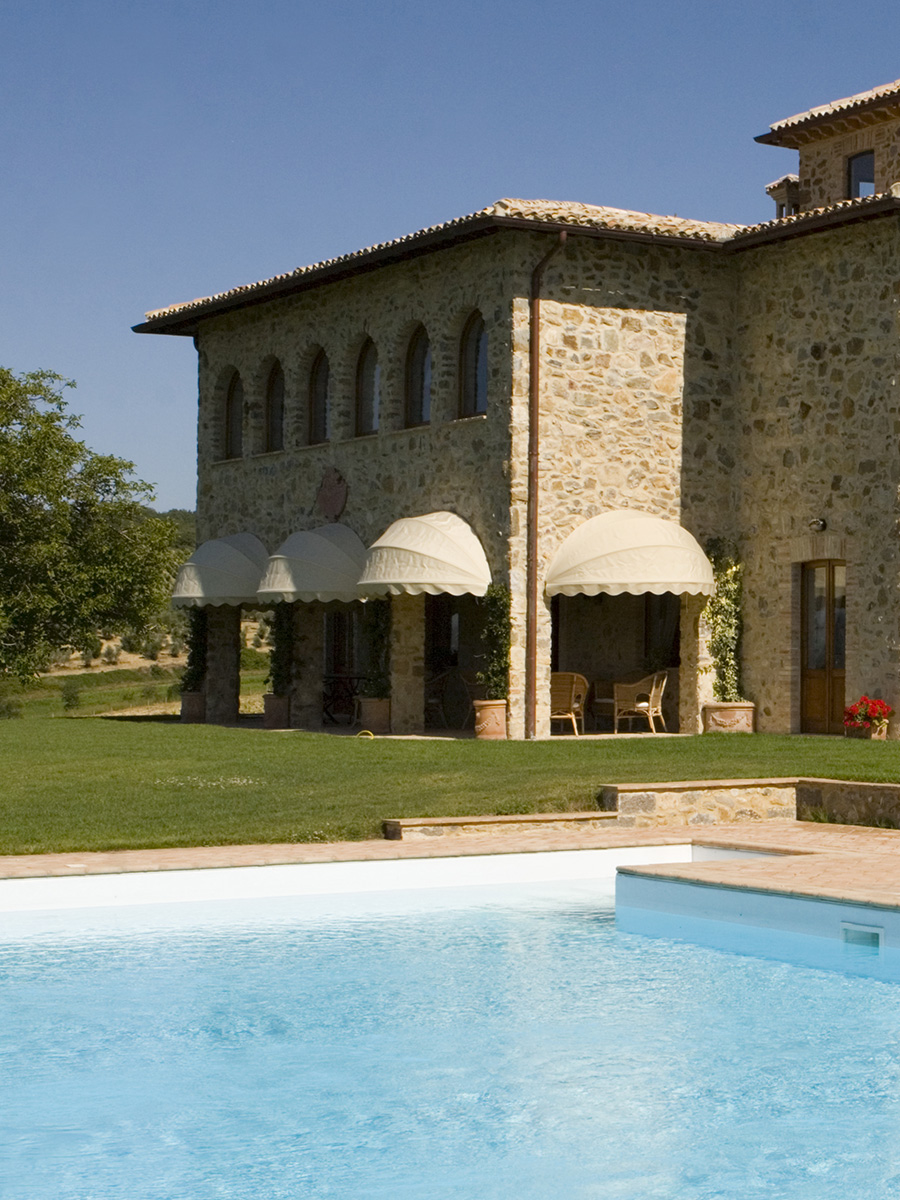
Villa Barbi
Rent the entire Villa for a dream vacation.
Learn More
